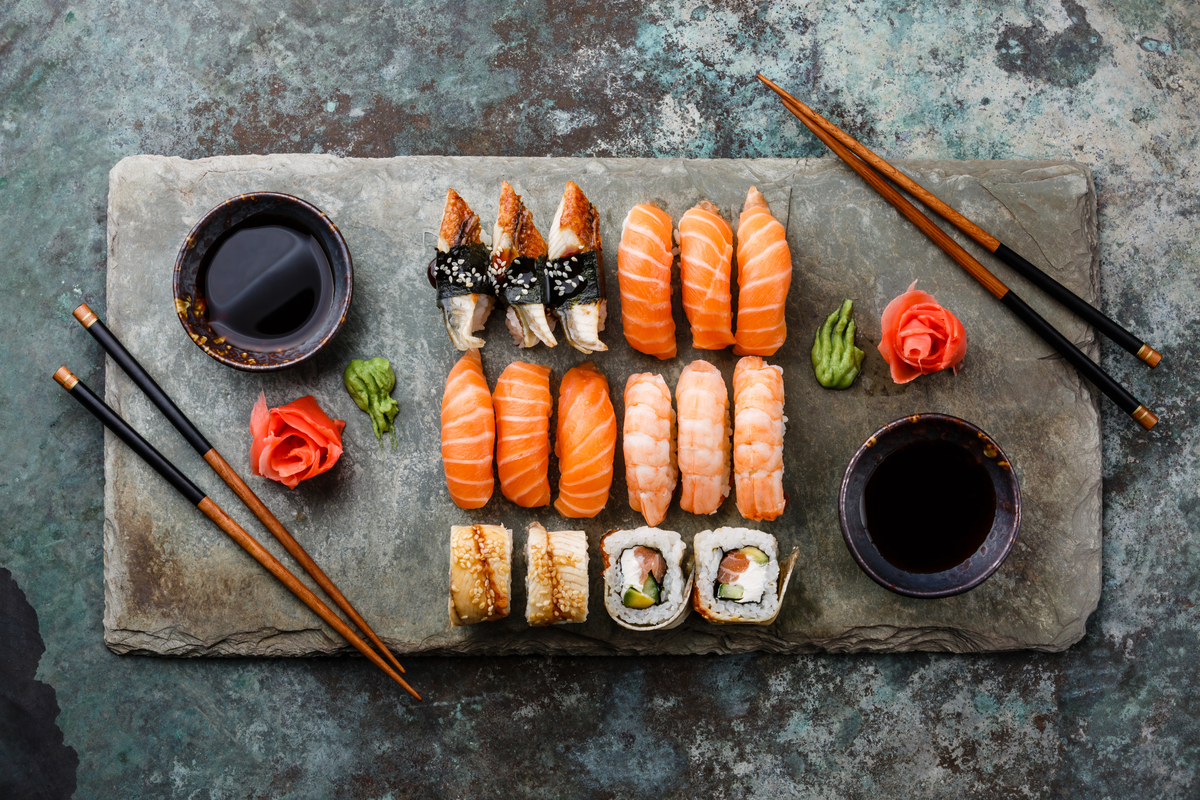Want to know more about what’s in our highly engineered sushi rolls?
Even many of the usual ingredients in commonly popular sushi rolls have some items that a lot of people ordering in American restaurants can’t pronounce, and don’t know a whole lot about. Here are three of those.
Kanikama
This item is more commonly known as “imitation crab meat.”
Lots of American sushi eaters end up googling to figure out whether a California roll has real crab meat in it. Chances are it does not – in many ways, kanikama is more sustainable and easier to source. It’s also less labor-intensive, and it’s actual seafood! It’s just not crab.
Kanikama is made from fish such as whiting, pollock or bream. It is specifically processed to feel like crabmeat, and neatly dyed for visual effect.
In fact, what you see with this and some of the other ingredients that we’ll be talking about is that sushi relies on color and texture, as well as those natural basic cuts of raw fish that may be included in a particular roll.
Hamachi
This is another ingredient that can be confusing to first-timers.
Hamachi, also known as “yellowtail fish,” is often farmed and imported from Japan for the American sushi plate.
One of the questions you’ll hear most often is this: “is yellowtail tuna?”
There’s a variety called yellowfin tuna which makes this confusing. Even more confusing is that the yellowtail fish is a sort of similar cousin to the tuna that experts describe as “similar to the tuna” or “tuna-like.”
You have to do more research to really break down the scientific animal classification of hamachi, but at least now you know what it is and you can spot it in your favorite sushi roll.
Masago
This interesting ingredient is actually Capelin fish roe. The Capelin is a cold water fish that is often used for its eggs, which make their way into high-quality sushi.
Another interesting thing to know about masago is that it’s often dyed in bright colors such as orange or green. So when you see those neon hues peeking out of your sushi roll, what you’re probably seeing is some form of dyed masago.
There are other types of caviar or fish roe that are more naturally colored, but masago is a very common part of the sushi maker’s toolkit, and we keep it on hand here, with just the right preservation techniques to be able to offer you maximum freshness!
For more, check out our website to see how we innovated the sushi roll, improving the quality and access for New York diners.





